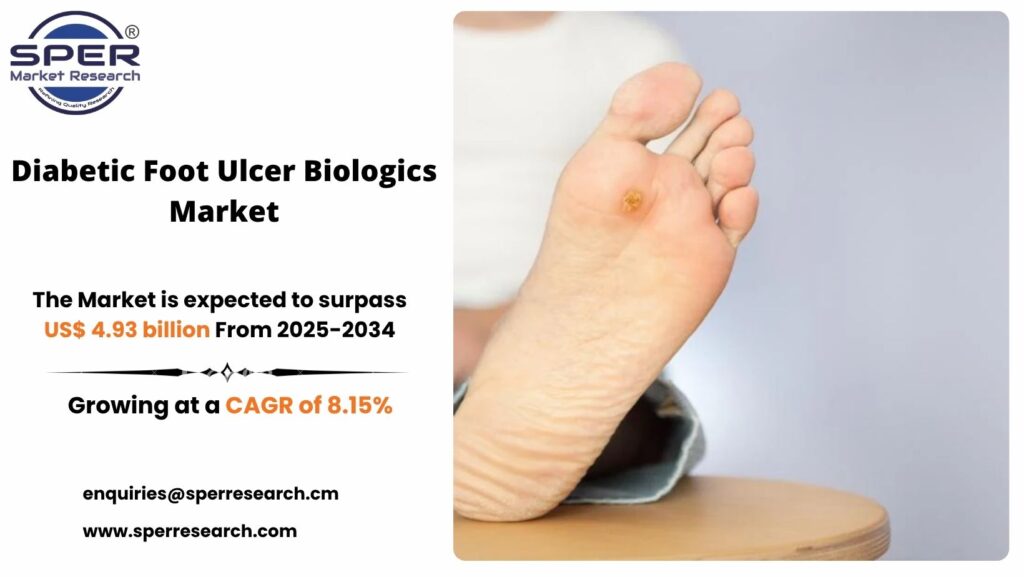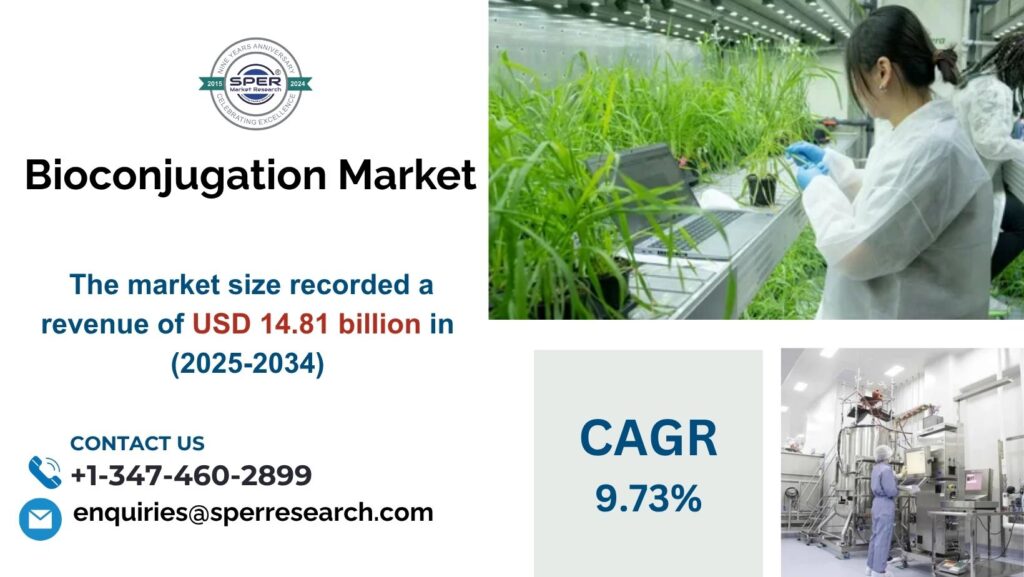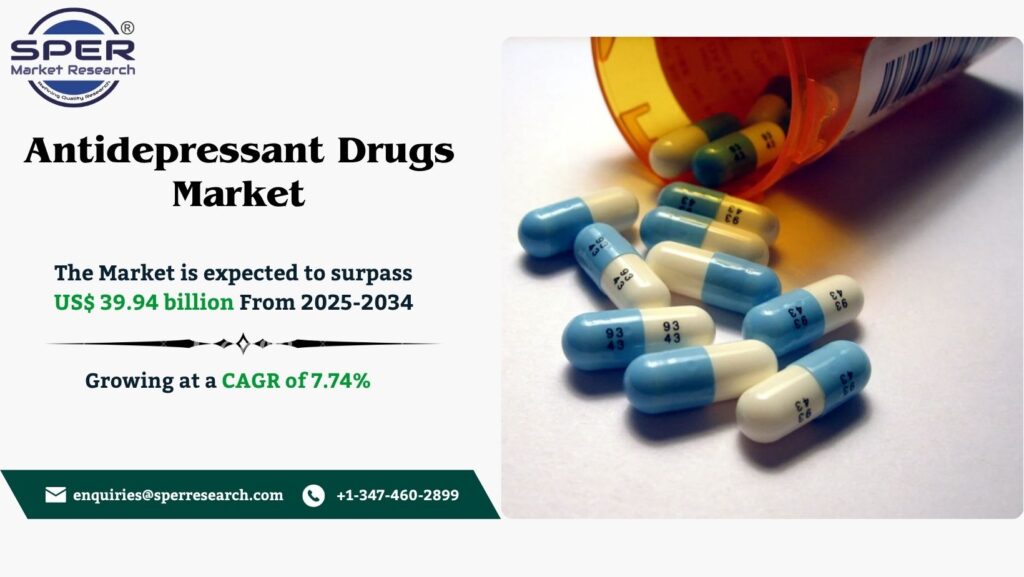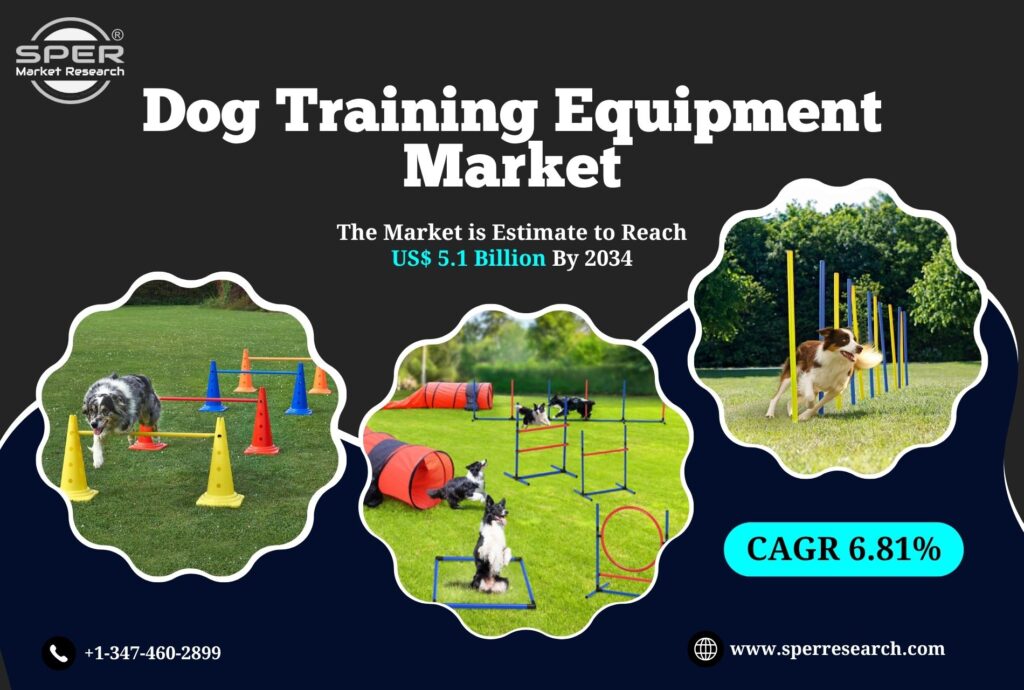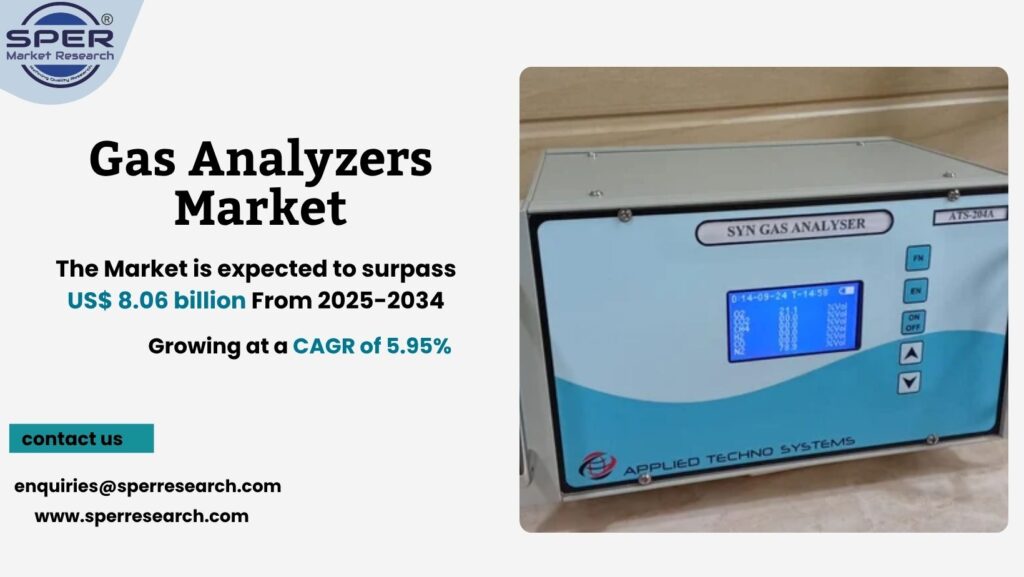Biologic treatments for diabetic foot ulcers (DFUs) are specialized therapies derived from natural living sources such as human or animal tissues, cells, or proteins that facilitate the healing of serious foot wounds in individuals with diabetes. The rising prevalence of diabetes and its associated consequences, such as diabetic foot ulcers, worldwide is the main factor propelling the growth of the DFU biologics market. Each year, there is a rising number of diabetes diagnoses, leading to a comparable rise in patients experiencing chronic, non-healing wounds like DFUs.
According to SPER market research, ‘Global Diabetic Foot Ulcer Biologics Market Size- By Product, By Indication, By End-User – Regional Outlook, Competitive Strategies and Segment Forecast to 2034’ state that the Global Diabetic Foot Ulcer Biologics Market is predicted to reach 4.93 billion by 2034 with a CAGR of 8.15%.
Drivers:
The increasing geriatric population significantly contributes to the heightened demand for advanced treatments like diabetic foot ulcer biologics for age-related health issues, including DFUs. Older adults are more predisposed to chronic conditions such as diabetes, and as they age, their bodies become less capable of healing wounds, rendering them more vulnerable to chronic, non-healing ulcers. Moreover, there is a persistent demand for improved and more precise treatment options. Both patients and healthcare practitioners are now seeking alternatives to traditional approaches and are turning towards advanced biologic therapies for diabetic foot ulcers. These biologics effectively target the root causes of the wounds, enhancing treatment efficacy.
Request a Free Sample Report: https://www.sperresearch.com/report-store/diabetic-foot-ulcer-biologics-market?sample=1
Restraints:
Biologic treatments originate from living organisms, and their production necessitates intricate and meticulously regulated manufacturing processes. This encompasses the cultivation of cells, the purification of growth factors, and the creation of bioengineered tissues or skin substitutes. The complexity of these procedures frequently demands specialized facilities, cutting-edge technologies, and rigorous quality control measures, all of which contribute to the overall production costs. These elevated manufacturing expenses are mirrored in the final pricing of biologic products. The creation of new biologic treatments requires substantial investment in research and development (R&D). Companies are obligated to perform comprehensive preclinical and clinical trials to verify the safety and effectiveness of their products. These R&D endeavors can be protracted and expensive, especially for novel or innovative therapies. North America held the biggest revenue share in the diabetic foot ulcer biologics market in 2024. This market leadership is fueled by heightened awareness regarding the necessity of prompt and effective wound care, alongside the increasing prevalence of chronic conditions like diabetes that can result in diabetic foot ulcers. Additionally, North America hosts prominent pharmaceutical firms and research institutions that foster innovation in biologic therapies, including growth factors and tissue-engineered solutions. Some of the key market players are Organogenesis Holdings Inc, Tissue Regenix, BioTissue, Integra LifeSciences, MIMEDX Group, Inc, and others.
For More Information, refer to below link: –
Diabetic Foot Ulcer Biologics Market Share
Related Reports:
Peripheral Nerve Injury Market Growth
AI In Cancer Diagnostics Market Growth
Follow Us –
LinkedIn | Instagram | Facebook | Twitter
Contact Us:
Sara Lopes, Business Consultant — USA
SPER Market Research
enquiries@sperresearch.com
+1–347–460–2899
